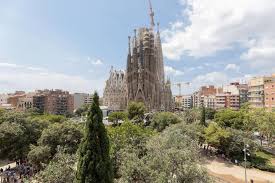
Introduction
The Sagrada Familia, an iconic basilica located in Barcelona, is not just a masterpiece of architecture but a symbol of Catalan culture and ambition. Designed by renowned architect Antoni Gaudí, the church has been under construction since 1882, making it one of the longest-running construction projects in history. Its blend of Gothic and Art Nouveau styles has captivated millions of visitors every year, highlighting its importance not only as a place of worship but also as a significant cultural landmark.
The Current State of Construction
As of 2023, the Sagrada Familia is nearing completion, with an anticipated finishing date set for 2026, coinciding with the 100th anniversary of Gaudí’s death. The basilica’s construction has faced numerous challenges, including funding issues, the Spanish Civil War, and the COVID-19 pandemic, which temporarily halted tourist visits in 2020 and 2021. Despite these setbacks, the dedication to completing Gaudí’s vision has persisted, with a reported 20 million euros raised annually through ticket sales and donations.
Architectural Features
The Sagrada Familia is renowned for its stunning facades and intricate details. The Nativity Facade, dedicated to the birth of Jesus, is adorned with sculptures depicting the life of Christ and is richly decorated with vibrant colours and motifs inspired by nature. In contrast, the Passion Facade, which represents the suffering of Christ, has a more austere design, reflecting the seriousness of the subject matter. The basilica’s interior is equally remarkable, with tree-like columns that rise to support the ceiling, mimicking a forest ambiance that enhances spiritual reflection.
Impact on Tourism and Local Economy
Tourism centred around the Sagrada Familia has significantly contributed to Barcelona’s economy. Before the pandemic, the basilica drew more than 4.5 million visitors annually, making it one of Spain’s most popular tourist attractions. Local businesses, from cafés to souvenir shops, thrive on the influx of visitors, making the basilica not just a cultural site but an economic lifeline for the city.
Conclusion
The Sagrada Familia is more than an architectural wonder; it is a testament to human creativity and perseverance. As its completion approaches in the coming years, the basilica is set to stand as a beacon of hope, resilience, and beauty for future generations. For visitors and locals alike, the Sagrada Familia remains not only a place of historical significance but a reflection of the shared cultural heritage of Barcelona and beyond.
You may also like


The Cultural and Historical Significance of Poppies
